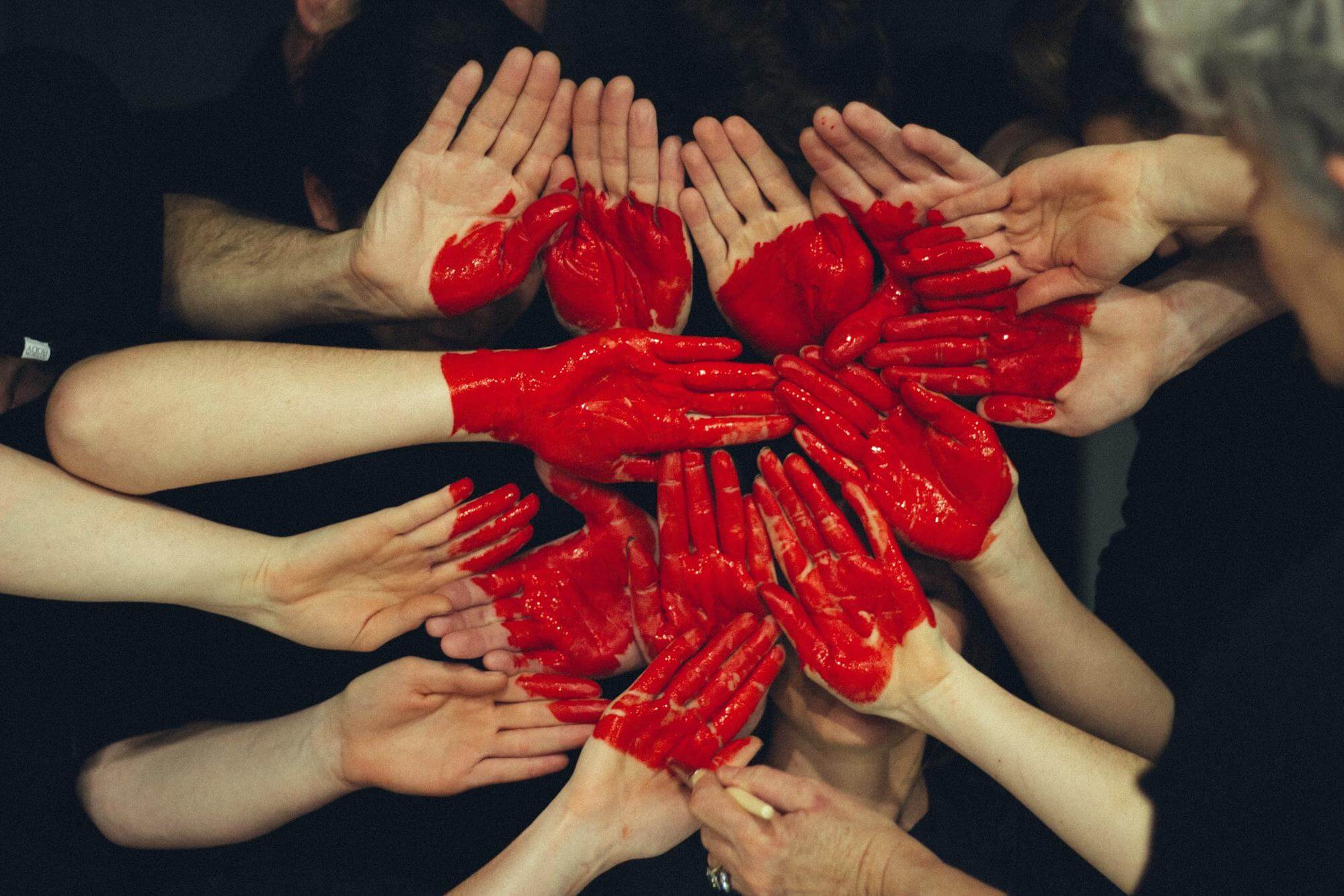
A kangaroo passing a burning house in Lake Conjola, Australia. (Credit: Matthew Abbott for the New York Times)
How a National Tragedy Started a Powerful Brand Movement
Seventeen million hectares of land has burnt across Australia. There have been 28 fatalities. Approximately 6,000 buildings have been destroyed. One billion animals have been lost. Over the past three months, Australia has been gripped by its biggest national bushfire crisis since the 2009 Black Saturday bushfires (which burnt 450,000 hectares but tragically killed 173 people). As horrific as these fires have been, they have highlighted the good nature of humanity. As heartbreaking images and frightening footage began circulating across social media, a number of fundraisers were established and people dug deep.
In fact, Facebook’s largest fundraising effort ever recorded was established, raising over $50 million towards helping fire services and those affected by bushfires. The fundraiser was started by none other than Australian comedian and social media personality, Celeste Barber. But that’s not all. In the wake of the devastating fires, a powerful movement began. Businesses started using their brand power for good, contributing a percentage of sales (100% for most) and generous donations towards bushfire relief. The altruism received a positive reception; a wave of support came flooding in from consumers who showed their appreciation in comments and likes.

Brands like doTERRA, an essential oil company, donated lump-sum payments to not-for-profit organisations.

JBronze, Jennifer Hawkins’ tanning brand, donated 100% of proceeds from sales in January to multiple charities.
The beauty of this movement was that it genuinely was a win-win situation for everyone: the business, the consumer, and the cause. Here’s how it works:
- A brand makes a post about its bushfire promotion/ donation initiative, raising awareness of the situation and reinforcing a humanitarian brand image.
- Customers get to shop guilt-free and with the instant gratification of knowing they have helped a charitable cause, which of course further reinforces their positive feelings towards the brand.
- Money is donated towards bushfire relief, helping fire services, animal services, and thousands of people who have been left without possessions.
All up, over $200 million has gone towards various charities such as the Red Cross, Wires, and NSW Rural Fire Services, according to Nine News. Without a doubt, consumers were inspired to give in many ways. Brands turned into charities, and influencers their ambassadors. The more they helped, the stronger they positioned their corporate social responsibility (CSR) efforts. Frankly, if you didn’t take part in the movement, your brand was left behind. A golden opportunity was born out of darkness, and without social media, it wouldn’t have proliferated to the extent that it did. Evidently, in today’s world, it pays to use altruism in your social media strategy.
Inspired to be a better brand? Let’s look at how you can build a better social media strategy, and in turn, a stronger brand image, by incorporating altruistic and ethical messaging. Feel like you need to get back to basics before you dive into social media strategy? Read our tips for creating a strong brand image, or if you’re in the middle of a bit of a do-over, check out our guide on rebranding.
The Power of Altruistic and Ethical Messaging - Why Marketers Should Care!
It’s no secret that the world has become a lot more socially and politically conscious, or as the kids are calling it these days – “woke”. More than ever, consumers have begun recognising brands that do good and take responsibility for their impact on the world. The brands that give back or make steps towards becoming more sustainable are rewarded. Those that engage in practices considered outdated and unethical are chastised. Unfortunately, even all the best marketing in the world can’t fix an image that’s been tarnished by unethical practices.
The Companies That Got it Wrong!
You may recognise some of the following make up brands that have received backlash for still testing on animals…
- Benefit
- Clinique
- Estee Lauder
- MAC Cosmetics
- Make Up For Ever
- Maybelline
- OPI
- Victoria’s Secret
To this day, MAC Cosmetics cops scrutiny from consumers who publicly shame them for their practices. If you’re interested in reading more about the MAC Cosmetics debacle, click here.

An Instagram user berates MAC Cosmetics on social media over their unethical business practice.
But it’s not just makeup brands that have been exposed being dodgy...Nestle, the Swiss multinational food and drink company has received lots of negative attention over the past few years for its attempt to privatise water in the US. In Flint, Michigan, people went over 1,000 days without clean tap water. Adding further insult to injury, Nestle’s CEO, Peter Brabeck-Letmathe, notoriously (and publicly) expressed controversial views on the matter of water access, expressing that water should not be a basic human right. Despite his – and his PR team’s – best efforts, his remarks sting linger as a pointed reminder of the corruption that emerges when corporate and government interest cross over.

As a result of this public debacle, as well as Nestle’s unsustainable palm oil sourcing methods, the company has seen a decline in consumer trust, which has inspired a new strategy focused on transparency.
When Businesses Do Good...
Thankfully, with every villain, there’s a hero. This story has an unexpected one: Jaden Smith, the son of Jada Pinkett-Smith and Will Smith. Partnering up with co-founder Drew Fitzgerald and the First Trinity Missionary Baptist Church, the young entrepreneur developed a mobile water filtration machine called the Water Box. As a result, Jaden and his sustainable water company, JUST Water, have received a positive reception from consumers. On top of a positive brand image, JUST Water is seeing growth. After all, it is a business. Last year, JUST Water received a $100 million dollar valuation. We told you… Being altruistic pays.

Just Water, Jaden’s sustainable water company, receives praise from Instagram users for having an impactful purpose and mission.
Business and Marketing in a Changing World
As studies show, it’s not just JUST Water that’s riding a wave of success due to its morally-aligned business practice. Research from the Massachusetts Institute of Technology shows a correlation between sustainability and profitability. Their findings show that 37% of businesses are reporting a profit from incorporating sustainability practices, and businesses that plan with climate change in mind see an 18% ROI. “Consumers, in general, prefer a sustainable business or product. Fortunately, there are plenty of businesses who took sustainability to a new level, and they [are] profiting from it tremendously. Almost all successful and profitable businesses have real sustainability measures in place...” (Guido Bauer, CEO of Green Globe).
According to Forbes, In a global study by Unilever, a British-Dutch consumer goods company, 21% of consumers indicated that they would support brands that clearly conveyed the sustainability aspects of their products through their marketing and packaging. Overall, Unilever cites a cool $1 trillion dollar market opportunity for those that market themselves as eco-innovators. Not bad, right?With these staggering new figures emerging, it’s no wonder brands have introduced new positions, such as the ‘chief sustainability officer’ (CSO), within companies. Before the 2000’s roles such as this did not exist. So, how can marketers jump on this movement to maximise their client’s ROI? That brings us to the nitty-gritty: implementing marketing and social media strategy that highlights the altruistic and ethical aspects of your client’s business. If you want to jump deeper into ethical consumerism, read about the brands that did it right by checking out our ethical brands and socially responsible marketing article.

Implementing Paid and Organic Social Media Strategy to Show Social and Ethical Responsibility
Social media is multifaceted; it brings out the best and worst in its users. Businesses are analysed under a microscope and bad decisions can be magnified and blown out of proportion, pushing businesses into crisis-mode. Remember Snapchat’s offensive ad game that asked customers would they rather “slap Rihanna” or “punch Chris Brown”? The ad not only received significant backlash but reportedly cost the company $650 million…On the other hand, if utilised effectively, social media can also shine a light on the great work businesses do – both for the world, and their customers. So, here are some tips for putting your clients in their best light.
1.You Can’t Pull a Rabbit out of the Hat When it Comes to Altruism
Firstly, you must understand what ethical/ sustainable/ community-friendly practices your client is implementing. These practices don’t have to be as large-scale as Tesla’s proposed 5.5 million-square-foot Gigafactory powered by solar energy unless your client has a few billion dollars to spare. Start with small achievements: recycling paper and waste, using natural light or energy-saving LED bulbs, partnering with a charity, sponsoring community events – you get the idea.

2.Refocus Paid Campaigns to Highlight Altruistic and Ethical Practices
With CSR being such a driving force for consumers when it comes to purchasing decisions, it makes sense to put this at the forefront of your marketing strategy. Share what your client is doing for the community or the planet, or if they’re not there yet, share what they’re planning to do. What steps are they taking to take responsibility for their impact on the world? Don’t feel constrained to only adopt this strategy for social media. Change up your email and SEM campaigns, and remember – test, test, test!

3.Be Transparent
A big word that we’re all going to hear from now on is transparency. For businesses, being transparent is the cool new thing. Not that anyone’s complaining – it’s a smart and progressing move. Recently, Pure Blonde, the Australian beer company, introduced their new and ‘disruptive’ campaign and product: the Pure Blonde Organic lager. So, how exactly is this campaign disruptive or transparent?
Well, they’ve started by publicly publishing the entire recipe and brewing process for the beverage. If that isn’t transparent, we don’t know what is.

The Carlton and United Breweries Marketing VP, Brian Phan, explained that this decision was strategically designed to follow trends showing consumers being more conscious of ingredients lists.By no means are we saying you should reveal every aspect of your client’s business, but showing openness and transparency towards your consumers is a definite winner (especially for consumers).
The Power of Social Media
While social media often gets a bad rap for its impact on society, sometimes it also works miracles. Whether you’re a fan or not, you can’t deny the power of social media in today’s world, especially when it comes to spreading awareness of social issues and starting powerful movements. Regardless of where your company stands on implementing altruism in its marketing and social media strategy, it’s important to consider these trends as we continue to see growth and ROI in these areas. Are you out of your depths when it comes to planning paid social media campaigns? Anchor Digital can help. Our team of experts are highly capable in all forms of digital marketing, from SEO to social media. You don’t have to brave the digital waters alone. Come and chat with us to discuss your goals.





























